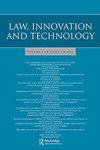分布式账本技术和财产登记:取代或现状
Q1 Social Sciences
引用次数: 1
摘要
财产登记主要有两个目的。首先,他们公开了存在于一块财产中的所有权利益(披露)。其次,它们为所有权权益的持有人提供了信心,使他们相信自己的权利将对其他各方具有强制执行力,并将优先于较小的竞争利益(保证)。然而,披露和保证只有在登记册上保存的资料准确和可信的情况下才有用。传统上,准确性和可信度是通过使用独立的中介机构来保证的。然而,许多现有的以中介人为基础的财产登记制度存在局限性,无法提供完整、准确和完全可靠的公共记录。本文讨论分布式账本技术(“DLT”)是否比中介机构更好地实现披露和保证的主要目标。在考虑DLT在这种情况下的有效性时,本文分析了三个具体用例作为示例:公司收费登记册,可注册的知识产权(专利和商标)和版权。文章认为,DLT不能克服与实现充分披露和保证相关的所有问题,但在某些情况下,它可以提供比现有注册系统更具体的优势。本文章由计算机程序翻译,如有差异,请以英文原文为准。
Distributed ledger technology and property registers: displacement or status quo
ABSTRACT There are two primary purposes of property registers. First, they make public the proprietary interests that exist in a piece of property (disclosure). Second, they provide confidence to the holders of proprietary interests that their rights will be enforceable against other parties and will take priority over lesser competing interests (assurance). However, disclosure and assurance are only useful to the extent that the information held on the register is accurate and trusted. Accuracy and trust have traditionally been ensured by using an independent intermediary. However, many existing property registration systems based on intermediaries have limitations and fail to provide a complete, accurate and fully reliable public record. This article addresses whether distributed ledger technology (‘DLT’) is better equipped than intermediaries to achieve the primary aims of disclosure and assurance. In considering the efficacy of DLT in this context, the article analyses three specific use cases as examples: the company charge register, registrable intellectual property (patents and trademarks) and copyright. The article argues that DLT cannot overcome all problems associated with achieving full disclosure and assurance, but in certain contexts it can offer specific advantages over existing registration systems.
求助全文
通过发布文献求助,成功后即可免费获取论文全文。
去求助
来源期刊

Law, Innovation and Technology
Social Sciences-Law
CiteScore
4.50
自引率
0.00%
发文量
18
期刊介绍:
Stem cell research, cloning, GMOs ... How do regulations affect such emerging technologies? What impact do new technologies have on law? And can we rely on technology itself as a regulatory tool? The meeting of law and technology is rapidly becoming an increasingly significant (and controversial) topic. Law, Innovation and Technology is, however, the only journal to engage fully with it, setting an innovative and distinctive agenda for lawyers, ethicists and policy makers. Spanning ICTs, biotechnologies, nanotechnologies, neurotechnologies, robotics and AI, it offers a unique forum for the highest level of reflection on this essential area.
 求助内容:
求助内容: 应助结果提醒方式:
应助结果提醒方式:


